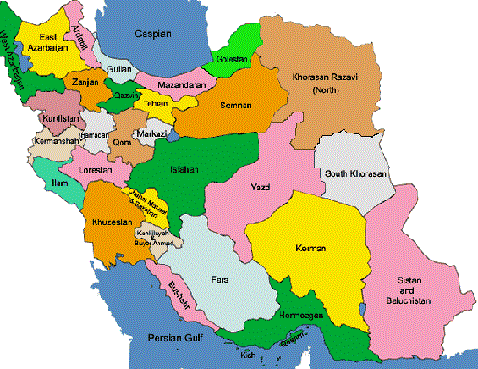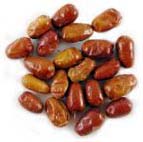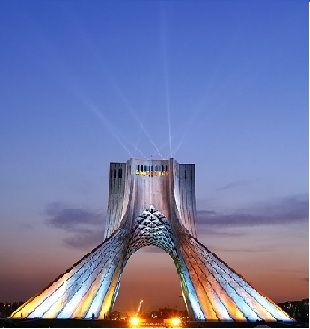This is about two great persons GREAT CYRUS and DARIUS
GREAT CYRUS:
Cyrus II of Persia (Old Persian: 



 [4] Kūruš; New Persian: کوروش بُزُرگ Kurosh-e Bozorg ; c. 600 or 576 – 530 BC[5]), commonly known as Cyrus the Great [6] and also known as Cyrus the Elder, was the founder of the Achaemenid Empire.[7] Under his rule, the empire embraced all the previous civilized states of the ancient Near East,[7] expanded vastly and eventually conquered most of Southwest Asia and much of Central Asia and the Caucasus. From the Mediterranean Sea and Hellespont in the west to the Indus River in the east, Cyrus the Great created the largest empire the world had yet seen.[8] Under his successors, the empire eventually stretched from parts of the Balkans (Bulgaria-Pannonia) and Thrace-Macedonia in the west, to the Indus Valley in the east. His regal titles in full were The Great King, King of Persia, King of Anshan, King of Media, King of Babylon, King of Sumer and Akkad, and King of the Four Corners of the World.
[4] Kūruš; New Persian: کوروش بُزُرگ Kurosh-e Bozorg ; c. 600 or 576 – 530 BC[5]), commonly known as Cyrus the Great [6] and also known as Cyrus the Elder, was the founder of the Achaemenid Empire.[7] Under his rule, the empire embraced all the previous civilized states of the ancient Near East,[7] expanded vastly and eventually conquered most of Southwest Asia and much of Central Asia and the Caucasus. From the Mediterranean Sea and Hellespont in the west to the Indus River in the east, Cyrus the Great created the largest empire the world had yet seen.[8] Under his successors, the empire eventually stretched from parts of the Balkans (Bulgaria-Pannonia) and Thrace-Macedonia in the west, to the Indus Valley in the east. His regal titles in full were The Great King, King of Persia, King of Anshan, King of Media, King of Babylon, King of Sumer and Akkad, and King of the Four Corners of the World.
The reign of Cyrus the Great lasted between 29 and 31 years. Cyrus built his empire by conquering first the Median Empire, then the Lydian Empire and eventually theNeo-Babylonian Empire. Either before or after Babylon, he led an expedition into central Asia, which resulted in major campaigns that were described as having brought "into subjection every nation without exception".[9] Cyrus did not venture into Egypt, as he himself died in battle, fighting the Massagetae along the Syr Darya in December 530 BC.[10][11] He was succeeded by his son, Cambyses II, who managed to add to the empire by conquering Egypt, Nubia, and Cyrenaica during his short rule.
DARIUS:
Darius I (Old Persian: Dārayava(h)uš, c. 550–486 BCE) was the third king of the Persian Achaemenid Empire. Also called Darius the Great, he ruled the empire at its peak, when it included much of West Asia, the Caucasus, parts of the Balkans (Thrace-Macedonia and Paeonia), most of the Black Sea coastal regions, parts of theNorth Caucasus, Central Asia, as far as the Indus Valley in the far east, and portions of north and northeast Africa including Egypt (Mudrâya),[3] eastern Libya and coastalSudan.[4][5]
Darius ascended the throne by overthrowing Gaumata, the alleged magus usurper of Bardiya with the assistance of six other Persian noble families; Darius was crowned the following morning. The new king met with rebellions throughout his kingdom and quelled them each time. A major event in Darius's life was his expedition to punishAthens and Eretria for their aid in the Ionian Revolt, and subjugate Greece. Although ultimately ending in failure at the Battle of Marathon, Darius succeeded in the re-subjugation of Thrace, expansion of the empire through the conquest of Macedon, the Cyclades, and the island of Naxos, and the sacking and enslavement of the city of Eretria.
Darius organized the empire by dividing it into provinces and placing satraps to govern it. He organized a new uniform monetary system, along with making Aramaic the official language of the empire. Darius also worked on construction projects throughout the empire, focusing on Susa, Pasargadae, Persepolis, Babylon and Egypt. He had the cliff-face Behistun Inscription carved to record his conquests, an important testimony of the Old Persian language.










 apple
apple

 samanoo
samanoo garlic
garlic acetic acid
acetic acid somagh
somagh











